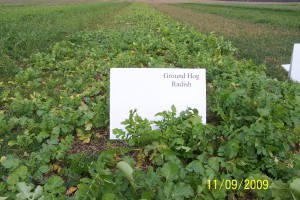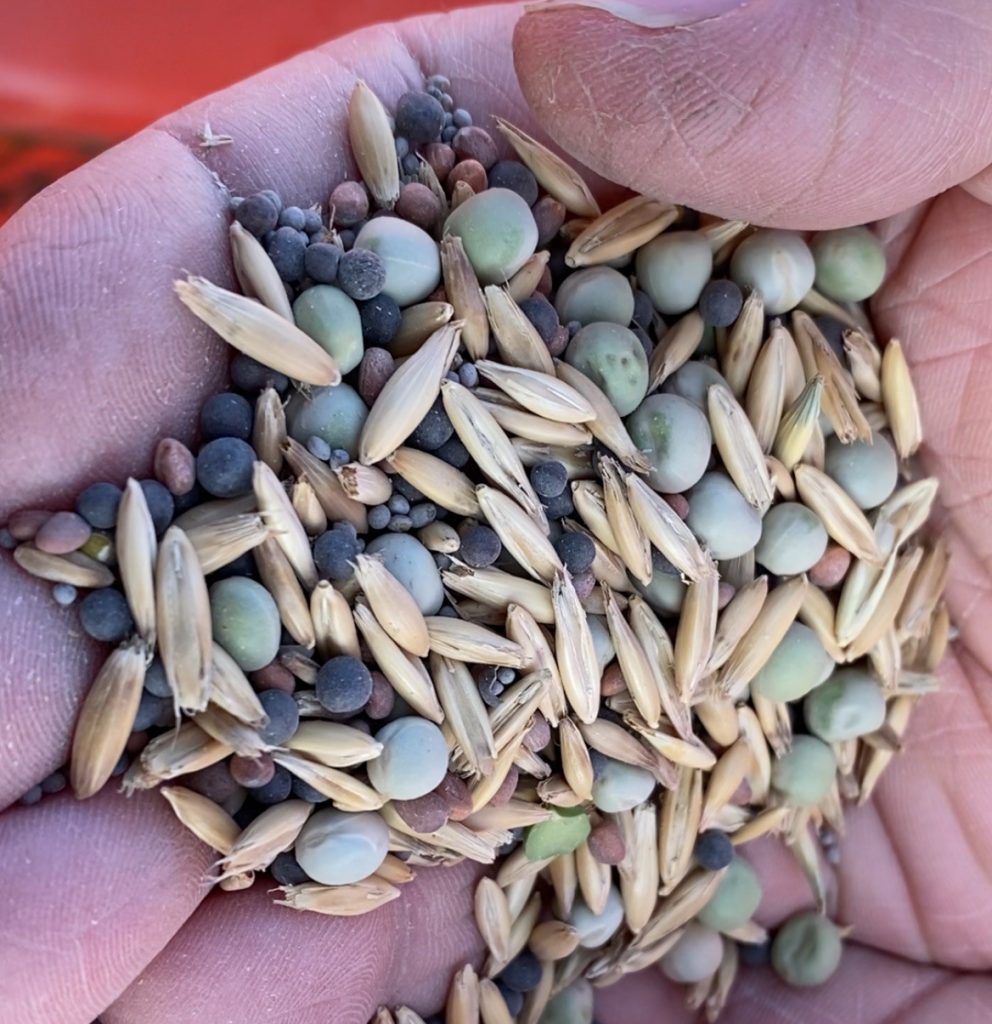As an agronomist I try real hard to recommend the correct seeding rates. For instance the “recommended” seeing rate on radishes has been 10-12#/acre but in reality only 3-5#/acre does a lot of good in mixes and 10-12 is WAY too thick (and expensive). Annual Ryegrass rates for cover crops is 1/2 that for forage. In fact, some producers use 12-15#/acre now and achieve very nice stands. Cutting seeding rates helps save the producer money and that is almost always a good thing, right?

However, there is another side of the coin. We do need to achieve adequate coverage to reduce erosion. Thin stands of cover crops might provide some purpose but they may also give a false sense of “security” that you’ve actually “done enough” to help. I guess the question is “what IS enough to help?” I’d suggest that 50% ground cover is not enough to give erosion control.
With the help of NRCS, past experiments in MI and OH, and other cover crop friends we determined that 35#/acre was going to be thick enough for Austrian Winter Peas and Radishes. Crimson Cover with Radishes seeded at 17-20#/acre looks just right.
So how do we know what the right seeding rate is? As I said earlier, I work with NRCS experts and do a lot of test plot work. In the fall of 2009I helped plant over 15 different cover crop test plots in OH, MI, and IN. Most of the plots are identical but in some of the plots we are experimenting on new mixes and different seeding rates. We take notice of plots that look thin and determine why. Did we get a good catch? Were the legumes inoculated so they can grow aggressively? Or, did we just plant too low of a rate?
In the plots in Southern Illinois I wrote about previously there were some plots that were quite thin. I wish I had taken photos of them. They had about 30% ground cover. The Hairy Vetch was not inoculated and it had few nodules and it was growing very slowly compared to the other inoculated legumes. I did not put those entries in the plot, but I wondered if they’d be thick enough when I saw the seeding rates they used.
It’s one thing to try to save money for the producers…and I’m all for that, IF the savings are actually savings. I guess it depends on the producers goal. Would producers plant their corn crop at 1/2 or 3/4 rate to save money?
What do you think?

What do you think? I think we need to learn more about what seeding rates are appropriate. Definitely purpose is really important. Erosion control on sloping land after soybeans versus nitrogen scavenging on flat ground. Additionally, we need to get a handle on what rates to use when seeding cover crops in mixes. These are the questions that we need to get a handle on. My hope is that we pool our observations and experiences in such a way that we can achieve some consistency between States. We need to also look at the broadcast vs drilled. I am seeing that drilled seeding rates can work well surface applied if incorporated adequately. It is appearing that the vertical tillage tools that have a good rolling basket type attachment on the back works a little better than the harrow type implements ie the phillips and phoenix type harrows particularly when experiencing drier soils.